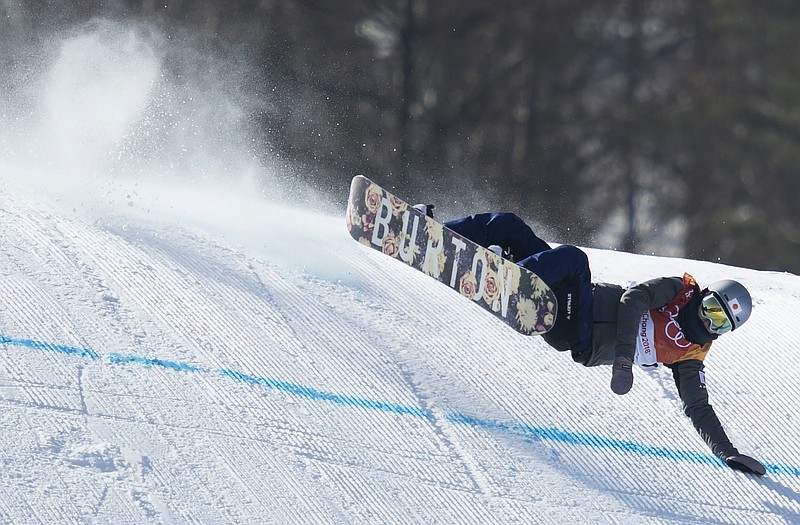PYEONGCHANG, South Korea - The first sign that wind might be a prevalent factor at these Winter Olympics was visible across the top of the mountains. Giant wind turbines dot the highest ridges, like candles on a cake.
The second might have been that a nearby village, a quaint tourist attraction with sledding and sleigh rides, is called Uiyaji Wind Village. "The sight of windmills standing high above the frozen plain are a sight to remember," according to a page on the official Pyeongchang Games website.
And then there was the literature from the organizing committee, boasting that these Olympics would be completely powered by nearby wind farms.
So it should have been no surprise when the wind took a silent, starring role at these Olympics, rivaling Chloe Kim and the North Korean cheerleading squad. It is an invisible but persistent disrupter, wreaking havoc on everything from the schedule of the Alpine ski events to the tents and other temporary structures surrounding the ice arenas near the coast.
Wind. Who could see it coming?
At the start of the Olympics, wind made the already bitter cold more unbearable. The temperatures became milder, but the wind just got more fierce.
It has been a nuisance (ski events keep getting postponed), a danger (the Olympic Park in Gangneung was evacuated Wednesday because tents and signs were blowing everywhere) and a novelty (the 20-plus-story apartment towers in the media and athlete villages swayed enough Wednesday to rock the hangers in the closets).
Wind greatly affected the women's slopestyle snowboard contest Monday, a day after qualifying runs had been canceled because of wind. In the finals, athletes crashed or essentially gave up on 41 of 50 runs. Some approached the big jumps at full speed, only to pull up at the last moment because snow made it impossible to see or the wind socks on the jumps were completely stiffened. Tess Coady of Australia blamed the wind for a knee injury sustained in a training run before the competition.
"Got picked up in the wind on the bottom jump in practice and my ACL was not a big fan!" she wrote on Instagram.
Several miles away Monday, the women's giant slalom competition was postponed, just as the men's downhill had been the day before. (They both ultimately took place Thursday, the first somewhat still day of the Games.)
It threw off training cycles and complicated the hopes of skiers like Mikaela Shiffrin, the U.S. star who is aiming to win multiple gold medals. Because of the wind, she faced three straight days of races, hardly ideal.
For most of a week, the blowing snow created white-out conditions on the ski courses. Gondolas tilted uncomfortably in the wind, and chair lifts were shut down. Race flags were blown off their poles. Mislaid gloves blew away.
But wind is a fickle foe to plenty of winter sports, and it has affected all of the outdoor events. On the biathlon course, it was even harder than usual to shoot straight. At the ski jump, 45-year-old veteran Noriaki Kasai of Japan said he had rarely felt such strong wind at a competition.
"It's unbelievable," he said. "The wind howls so loud it's frightening being up there."
Who knew it could be so windy in such a lovely place? Actually, Olympic organizers did. The Pyeongchang 2018 Organizing Committee had a "meteorology and climate team" that supplied a 26-page report about weather, updated last year.
The most dominant pattern this time of year, the report warned, was the "Siberian High," as cold and dry winds from the northwest come with little obstruction all the way from Siberia.
"High winds and low windchill temperatures are the most influential factors in particular during the Olympic period," the report said.
That explains the wind turbines.
